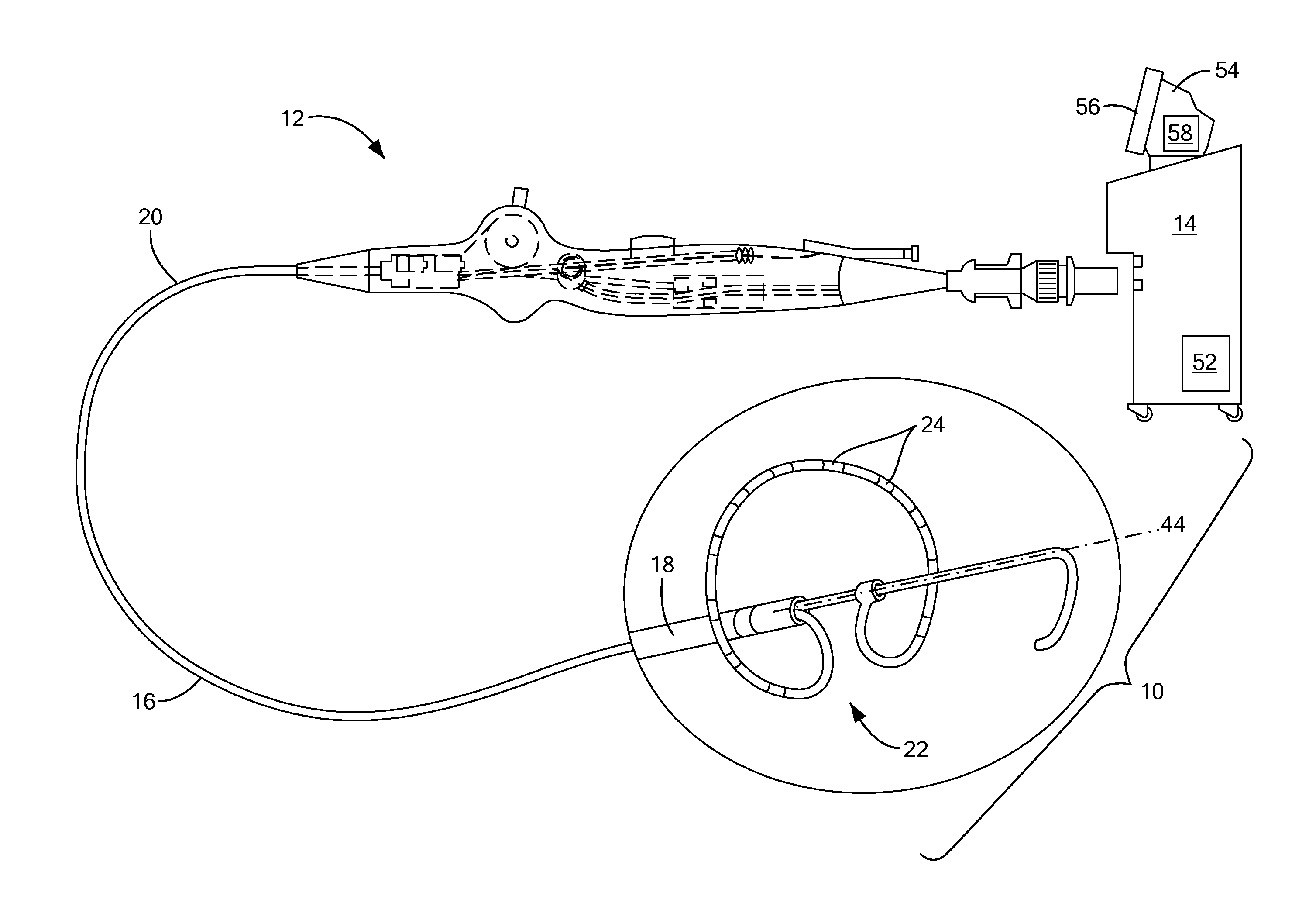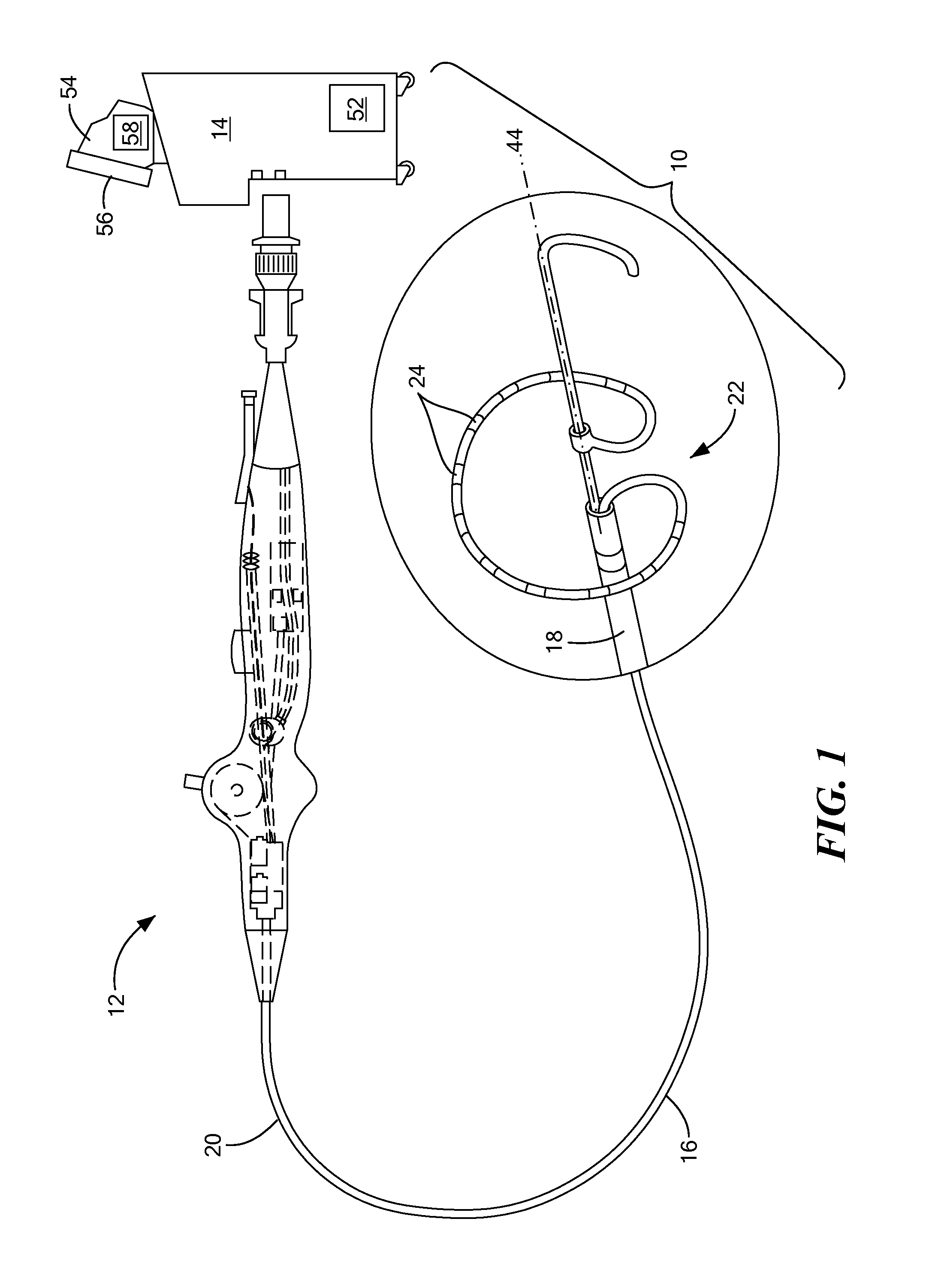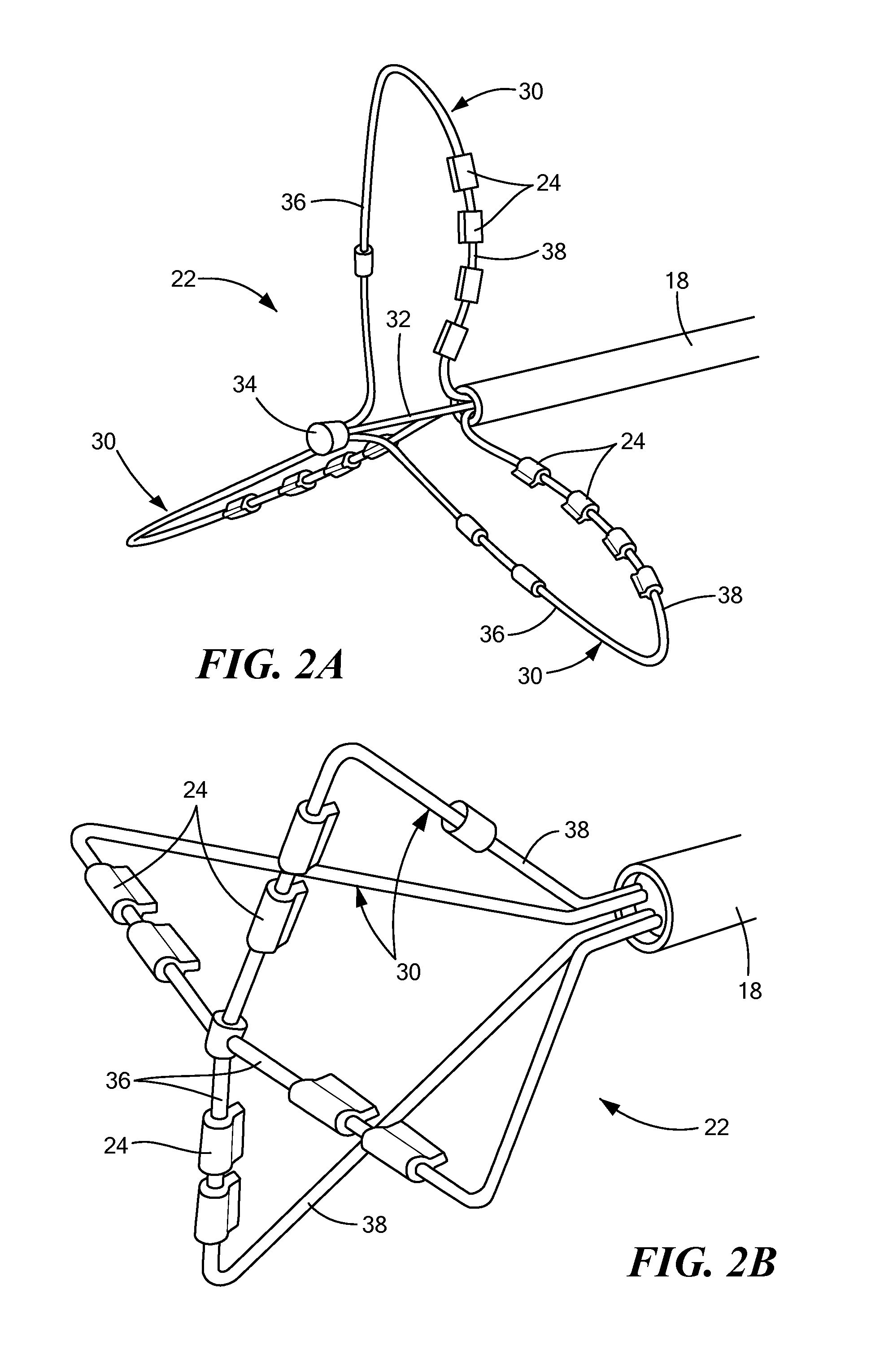Tissue contact sensing with a multi electrode ablation catheter
a multi-electrode ablation and tissue contact technology, applied in the field of tissue contact sensing with a multi-electrode ablation catheter, can solve the problems of high cost of imaging equipment, time-consuming, and wide variation between patients, and achieve the effect of reducing the risk of infection
- Summary
- Abstract
- Description
- Claims
- Application Information
AI Technical Summary
Benefits of technology
Problems solved by technology
Method used
Image
Examples
Embodiment Construction
[0036]Referring now to FIGS. 1-3, an exemplary system for assessing electrode-tissue contact is shown. The system 10 may generally include a treatment device, such as an ablation catheter 12, for thermally treating an area of tissue and a console 14 that houses various system controls. The system 10 may be adapted for the use of one or more energy modalities, such as radiofrequency (RF) ablation, cryoablation, electroporation, pulsed field ablation, and / or microwave ablation.
[0037]The ablation catheter 12 may include an elongate body 16 having a distal portion 18 and a proximal portion 20. The distal portion 18 may include a treatment assembly 22 with one or more ablation electrodes 24. For example, the treatment assembly 22 may include one or more carrier arms 30 each bearing one or more ablation electrodes 24. Although not shown, one or more of the carrier arms 30 may also bear one or more mapping electrodes, pacing electrodes, reference electrodes, radiopaque markers, sensors (su...
PUM
 Login to View More
Login to View More Abstract
Description
Claims
Application Information
 Login to View More
Login to View More - R&D
- Intellectual Property
- Life Sciences
- Materials
- Tech Scout
- Unparalleled Data Quality
- Higher Quality Content
- 60% Fewer Hallucinations
Browse by: Latest US Patents, China's latest patents, Technical Efficacy Thesaurus, Application Domain, Technology Topic, Popular Technical Reports.
© 2025 PatSnap. All rights reserved.Legal|Privacy policy|Modern Slavery Act Transparency Statement|Sitemap|About US| Contact US: help@patsnap.com



